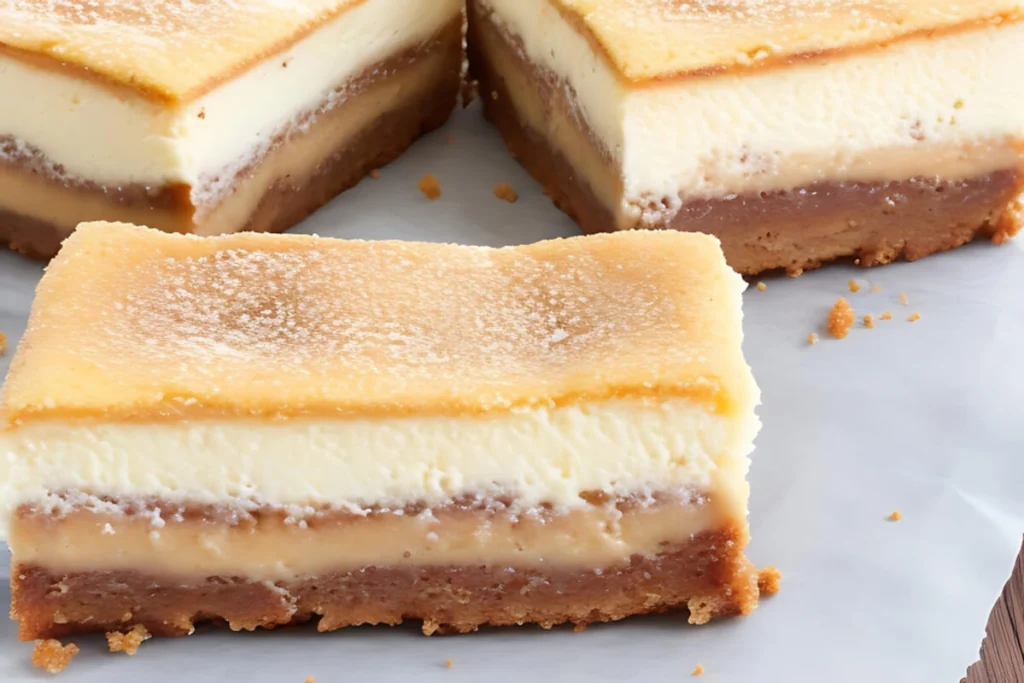
Few desserts can match the rich, creamy decadence of a cheesecake, and when transformed into convenient, handheld bars, the indulgence becomes even more tempting. Philadelphia Cheesecake Bars offer the perfect balance of smooth, luscious cheesecake and a buttery crust, making them a favorite for dessert lovers everywhere. Their irresistible appeal lies in the high-quality ingredients, particularly the iconic Philadelphia Cream Cheese, which has long been associated with superior taste and texture. Whether enjoyed as an afternoon snack, a party treat, or a satisfying dessert, these bars deliver the classic cheesecake experience in a simple, grab-and-go form.
Table of Contents
Table of Contents
The History of Philadelphia Cream Cheese in Cheesecake
How Philadelphia Cream Cheese Became the Gold Standard
Philadelphia Cream Cheese has been synonymous with creamy, rich cheesecake for over a century. The story begins in 1872, when dairy farmer William Lawrence in New York accidentally developed a smoother, richer form of cream cheese while trying to recreate a French soft cheese called Neufchâtel. This new product was soon marketed under the Philadelphia brand, named after the city known at the time for its high-quality dairy products.
As cheesecake recipes evolved, bakers quickly realized that Philadelphia Cream Cheese provided the perfect creamy consistency and mild tangy flavor, making it the ideal base for cheesecakes. By the mid-20th century, New York-style cheesecake, made primarily with Philadelphia Cream Cheese, became a culinary icon. Over time, home bakers and professional chefs alike came to trust this brand as the gold standard for cheesecake recipes, ensuring a consistently rich and smooth texture.
The Rise of Cheesecake Bars as a Convenient Dessert
While traditional cheesecakes have long been a favorite dessert, they can be time-consuming to prepare and require precise baking techniques. Enter cheesecake bars—a modern twist on the classic dessert that offers all the indulgence of cheesecake with added convenience.
Cheesecake bars likely gained popularity in the mid-to-late 20th century, as home bakers and food companies sought easier ways to enjoy their favorite desserts without the hassle of slicing a full cheesecake. These bars typically feature a crumbly graham cracker crust or cookie base, topped with a thick layer of creamy cheesecake filling, and often finished with swirls of fruit, chocolate, or caramel.
Food companies, including Philadelphia Cream Cheese, capitalized on this trend by introducing pre-packaged cheesecake bars, allowing consumers to enjoy their favorite treat on the go. The success of these bars can be attributed to their portion control, ease of serving, and rich, satisfying flavor—a winning combination for busy dessert lovers.
Today, Philadelphia Cheesecake Bars come in various flavors, from classic original to strawberry, chocolate, and salted caramel, making them a versatile and beloved treat. Whether homemade or store-bought, these bars continue to be a deliciously convenient way to enjoy the timeless appeal of cheesecake.
Essential Ingredients for the Perfect Philadelphia Cheesecake Bars
Creating the perfect Philadelphia Cheesecake Bars requires high-quality ingredients and a well-balanced recipe. Each component plays a crucial role in achieving the signature smooth, creamy texture and irresistible flavor that make these bars so popular.
1. Philadelphia Cream Cheese for a Creamy Texture
The star of any cheesecake recipe is the cream cheese, and Philadelphia Cream Cheese is the gold standard. Its rich, velvety texture and mild tanginess set it apart from other brands, ensuring the cheesecake layer is smooth and luxurious. To achieve the best results:
- Use full-fat Philadelphia Cream Cheese for maximum creaminess.
- Let the cream cheese soften at room temperature before mixing to avoid lumps.
- Beat the cream cheese until light and fluffy to create a silky consistency.
2. Choosing the Right Crust: Graham Crackers, Oreos, or Shortbread?
The crust serves as the foundation of your cheesecake bars, adding a delightful crunch that contrasts beautifully with the creamy filling. There are several options to choose from:
- Graham Cracker Crust – The most traditional and widely used crust, made by combining crushed graham crackers with melted butter and sugar. It provides a slightly sweet, buttery base that complements the cheesecake.
- Oreo Crust – Perfect for chocolate lovers, crushed Oreo cookies (with or without the filling) create a rich, chocolatey base that pairs well with vanilla or chocolate-flavored cheesecake bars.
- Shortbread Crust – A buttery, slightly crumbly crust that adds a more delicate texture and a subtle sweetness. This works especially well with fruit-flavored cheesecake bars.
3. The Role of Eggs, Vanilla, and Sugar for Balance
While cream cheese and crust provide structure, eggs, vanilla, and sugar help balance the flavors and ensure the perfect texture:
- Eggs – Essential for a smooth, firm texture, eggs bind the ingredients together during baking. Be sure to add them one at a time, mixing gently to avoid incorporating too much air, which can cause cracks in the cheesecake.
- Vanilla Extract – Enhances the overall flavor with its warm, aromatic sweetness. Using pure vanilla extract rather than artificial flavoring makes a noticeable difference.
- Sugar – Adds sweetness and helps balance the tanginess of the cream cheese. Granulated sugar is most commonly used, but brown sugar or honey can add a deeper flavor.
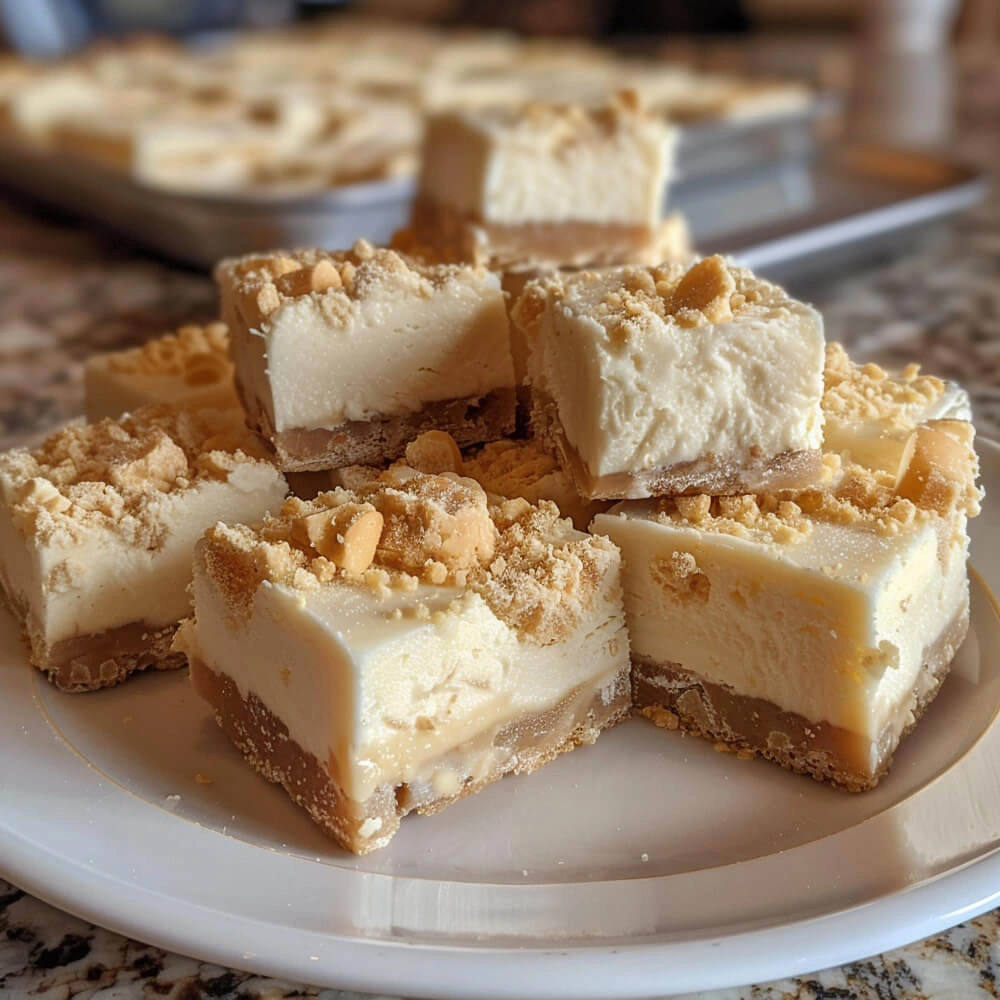
Step-by-Step Recipe for Philadelphia Cheesecake Bars
1. Making the Crust: Perfecting the Base
Ingredients:
- 1 ½ cups graham cracker crumbs (or Oreos/shortbread, depending on preference)
- ¼ cup granulated sugar (optional, adjust based on crust choice)
- ½ cup melted butter
Instructions:
- Preheat your oven to 325°F (163°C).
- In a medium bowl, combine the crumbs, sugar, and melted butter, mixing until evenly coated.
- Press the mixture firmly into the bottom of a 9×9-inch baking pan lined with parchment paper.
- Bake for 8-10 minutes (if using a baked crust) or chill in the refrigerator while preparing the filling (for a no-bake version).
2. Preparing the Creamy Cheesecake Filling
Ingredients:
- 2 (8 oz) packages Philadelphia Cream Cheese, softened
- ½ cup granulated sugar
- 2 large eggs
- 1 tsp pure vanilla extract
- ¼ cup sour cream (optional, for extra creaminess)
Instructions:
- In a large bowl, beat the cream cheese and sugar until smooth and fluffy.
- Add the eggs, one at a time, mixing on low speed until just combined.
- Stir in the vanilla extract and sour cream for a silky consistency.
- Pour the cheesecake filling over the prepared crust, spreading it evenly.
3. Baking vs. No-Bake: Which Method is Best?
Baked Cheesecake Bars
- Preheat the oven to 325°F (163°C).
- Bake for 30-35 minutes, or until the center is set but slightly jiggly.
- Allow the bars to cool at room temperature before refrigerating for at least 3-4 hours (or overnight for best results).
Pros:
- Classic cheesecake texture
- Holds its shape well
- Slightly firmer consistency
Cons:
- Requires oven baking
- Longer chill time
No-Bake Cheesecake Bars
- Instead of eggs, use 1 cup of whipped cream or whipped topping to help stabilize the filling.
- Pour the cheesecake mixture over the crust and chill in the refrigerator for at least 4 hours (preferably overnight).
Pros:
- Quick and easy preparation
- No need for baking
- Lighter, mousse-like texture
Cons:
- Softer consistency
- Needs longer chilling time
Expert Tips for Achieving the Best Cheesecake Bars
How to Prevent Cracks in Cheesecake Bars
Cracks in cheesecake bars occur when the filling is overmixed, overbaked, or cools too quickly. Follow these tips to keep your bars smooth and flawless:
- Avoid Overmixing – After adding eggs, mix on low speed to prevent incorporating too much air, which can cause cracks when baking.
- Bake at a Lower Temperature – Cheesecake should be baked slowly at 325°F (163°C) to prevent drying out and cracking.
- Do Not Overbake – The center should be slightly jiggly when you remove it from the oven. It will set as it cools.
- Cool Gradually – Let the cheesecake bars cool at room temperature for about one hour before transferring them to the refrigerator.
- Use a Water Bath (Optional) – Placing a pan of hot water on the lower oven rack adds moisture, preventing cracks.
Getting the Right Texture: Creamy Yet Firm
A perfect cheesecake bar should be smooth, rich, and firm enough to hold its shape. Here’s how to achieve that texture:
- Use Full-Fat Philadelphia Cream Cheese – Low-fat alternatives may result in a grainy or thin texture.
- Room Temperature Ingredients – Let cream cheese, eggs, and sour cream sit at room temperature before mixing to ensure a smooth batter.
- Chill for At Least Four Hours – Refrigerating overnight is even better, allowing the bars to set properly for clean slices.
- Cut with a Hot Knife – Dip a sharp knife in hot water and wipe it clean before slicing for smooth, professional-looking bars.
Common Mistakes and How to Fix Them
- Cracks in the Cheesecake – If cracks appear, cover them with whipped cream, fruit topping, or ganache for a flawless finish.
- Soggy Crust – Pre-bake the crust for 8-10 minutes before adding the filling. For a no-bake version, chill the crust for at least 30 minutes before adding the cheesecake layer.
- Grainy Texture – Fully blend the cream cheese before adding eggs. Overmixing after adding eggs can create a grainy texture.
Creative Variations of Philadelphia Cheesecake Bars
Once you have mastered the classic cheesecake bars, experiment with different flavors and toppings to enhance their appeal.
Chocolate Swirl Cheesecake Bars
A rich chocolate swirl adds a beautiful visual effect and deep flavor to classic cheesecake bars.
How to Make It:
- Melt ½ cup of semi-sweet chocolate chips and let it cool slightly.
- After pouring the cheesecake batter onto the crust, drizzle the melted chocolate on top.
- Use a toothpick or knife to swirl the chocolate into the batter for a marbled effect.
- Bake as usual and chill before serving.
Fruity Bliss: Strawberry, Blueberry, or Raspberry Toppings
Adding fresh fruit or fruit compote provides a refreshing contrast to the creamy cheesecake filling.
How to Make It:
- Prepare a quick fruit compote by simmering one cup of fresh or frozen berries, ¼ cup sugar, and one tablespoon lemon juice until thickened.
- Spread the fruit topping over the chilled cheesecake bars.
- Alternatively, swirl the fruit compote into the cheesecake batter before baking for a marbled fruit cheesecake effect.
Best Fruits to Use:
- Strawberries – Classic and slightly tangy, perfect with a graham cracker crust.
- Blueberries – Sweet and juicy, pairs well with a shortbread crust.
- Raspberries – Tart and vibrant, a great match for an Oreo crust.
Salted Caramel and Nutty Crunch Versions
For a rich and buttery-sweet twist, add salted caramel and toasted nuts to your cheesecake bars.
How to Make It:
- Drizzle homemade or store-bought caramel sauce over the cheesecake bars before serving.
- Sprinkle chopped toasted pecans, almonds, or walnuts on top for a delightful crunch.
- For an extra flavor boost, add a pinch of flaky sea salt on top.
Best Toppings and Garnishes for Cheesecake Bars
Toppings add extra flavor, texture, and visual appeal to cheesecake bars. Whether you prefer a classic finish or something more indulgent, here are some of the best options:
Whipped Cream, Fresh Berries, and Chocolate Drizzle
For a light and elegant touch, these toppings enhance the creamy texture of cheesecake bars without overpowering them.
- Whipped Cream – A dollop of freshly whipped cream adds a soft, airy contrast to the dense cheesecake.
- Fresh Berries – Strawberries, blueberries, raspberries, or blackberries provide a natural sweetness and a pop of color.
- Chocolate Drizzle – Melted dark, milk, or white chocolate drizzled over the bars creates a visually appealing and decadent finish.
Caramel Sauce, Nuts, or Cookie Crumbles
For a richer, more indulgent variation, these toppings offer a delicious mix of sweetness and crunch.
- Caramel Sauce – Drizzle warm caramel over the bars for a buttery, sweet contrast. A sprinkle of sea salt enhances the flavor.
- Nuts – Chopped pecans, almonds, or walnuts add crunch and pair well with caramel or chocolate.
- Cookie Crumbles – Crushed Oreos, graham crackers, or shortbread cookies add texture and enhance the flavor of the crust.
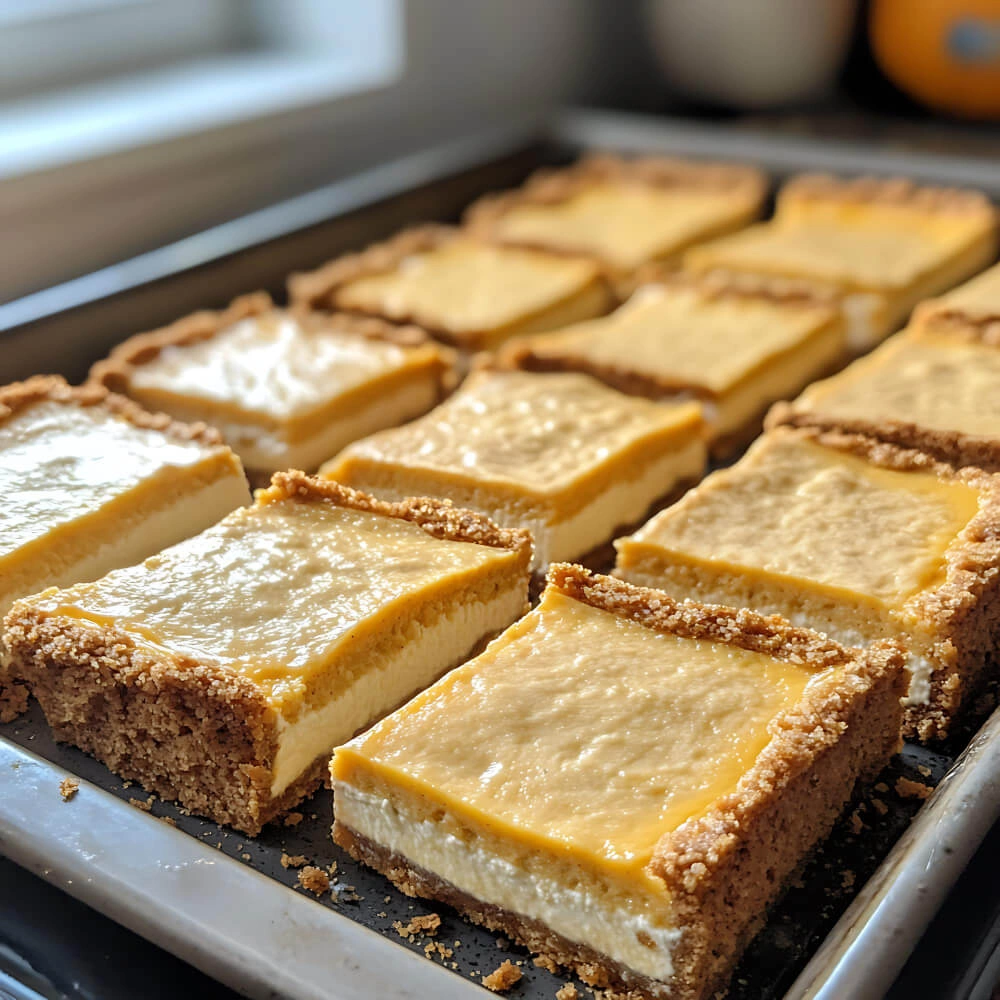
How to Store and Keep Cheesecake Bars Fresh
Proper storage ensures that your cheesecake bars remain fresh and maintain their creamy texture.
Refrigeration vs. Freezing: Best Practices
Refrigeration (For short-term storage)
- Store cheesecake bars in an airtight container or wrap them tightly with plastic wrap.
- Keep them in the refrigerator for up to 5 days.
- Allow refrigerated cheesecake bars to sit at room temperature for 10-15 minutes before serving for the best texture.
Freezing (For long-term storage)
- Wrap individual cheesecake bars in plastic wrap, then place them in a freezer-safe bag or airtight container.
- Cheesecake bars can be frozen for up to 3 months.
- To thaw, transfer them to the refrigerator overnight or let them sit at room temperature for 30 minutes before serving.
FAQs
Can I make cheesecake bars without baking?
Yes, you can make no-bake cheesecake bars, which are just as creamy and delicious as the baked version. Instead of eggs, use whipped cream or gelatin to help the filling set. The crust is typically made from graham cracker crumbs and melted butter, then chilled instead of baked. No-bake cheesecake bars require at least 4-6 hours in the refrigerator (or overnight) to firm up properly before serving.
What’s the best way to cut cheesecake bars cleanly?
For smooth, professional-looking slices, follow these steps:
- Chill the cheesecake bars thoroughly – They should be refrigerated for at least 4 hours or overnight before cutting.
- Use a sharp knife – A large chef’s knife or serrated knife works best.
- Dip the knife in hot water – Run the blade under hot water, then wipe it dry before each cut to prevent sticking.
- Wipe the knife between slices – Clean off any excess cheesecake or crumbs to keep the edges neat.
Can I make cheesecake bars ahead of time for an event?
Yes, cheesecake bars are an excellent make-ahead dessert. You can prepare them 1-2 days in advance and store them in the refrigerator in an airtight container. If making them further in advance, freeze them for up to 3 months, then thaw in the refrigerator overnight before serving. For best presentation, add toppings like whipped cream or fresh fruit just before serving.
How do I prevent my crust from becoming soggy?
A soggy crust can ruin the texture of cheesecake bars. Here’s how to avoid it:
- Pre-bake the crust – For baked cheesecake bars, bake the crust for 8-10 minutes at 325°F (163°C) before adding the filling. This helps it set and prevents it from absorbing moisture.
- Use the right butter-to-crumb ratio – Too much butter can make the crust greasy, while too little can make it crumbly. The ideal ratio is 1 ½ cups of crumbs to ½ cup of melted butter.
- Press the crust firmly into the pan – A compact crust holds together better and prevents gaps where moisture could seep in.
- Chill the crust for no-bake versions – Refrigerate the crust for at least 30 minutes before adding the cheesecake filling to help it stay firm.
Philadelphia Cheesecake Bars are a perfect blend of creamy, rich cheesecake and a buttery, flavorful crust, making them an irresistible dessert for any occasion. Whether you prefer the classic baked version or the quick and easy no-bake alternative, the key to success lies in using high-quality ingredients, proper techniques, and creative toppings.
From preventing cracks and achieving the perfect texture to customizing flavors with chocolate, fruit, or caramel, these cheesecake bars can be adapted to suit any taste. With the right storage methods, they can also be prepared ahead of time for convenience without compromising freshness.
Viral Tuna Salad: 5 Bold Reasons Matthew McConaughey’s Recipe Wins
Healthy Homemade Chicken Mortadella
Chicken Mortadella changed my deli game forever. I used to stare at processed meat…
The BEST Taco Pasta
When I’m short on time and need to get a satisfying dinner on…
Classic German Kartoffelpuffer Recipe (Authentic, Crispy & Easy to Make)
Easy Butter Pecan Cookies Recipe
There’s something undeniably comforting about the scent of buttery, nutty cookies wafting from…
Perfect Strawberry Cheesecake Recipe
If there’s one dessert that’s guaranteed to silence a lively room, it’s this…


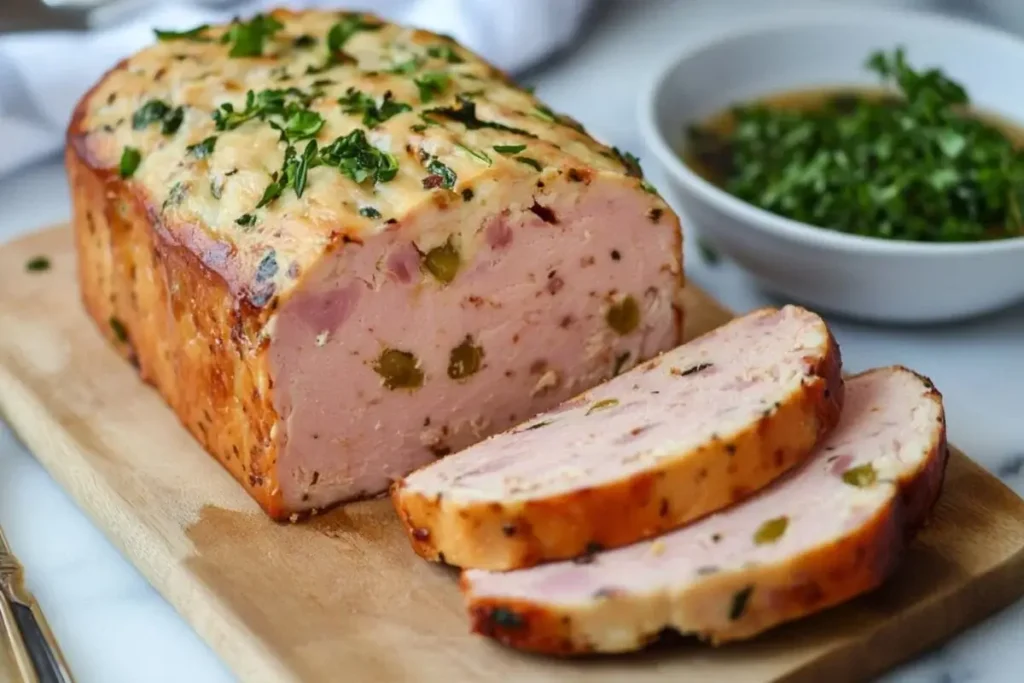

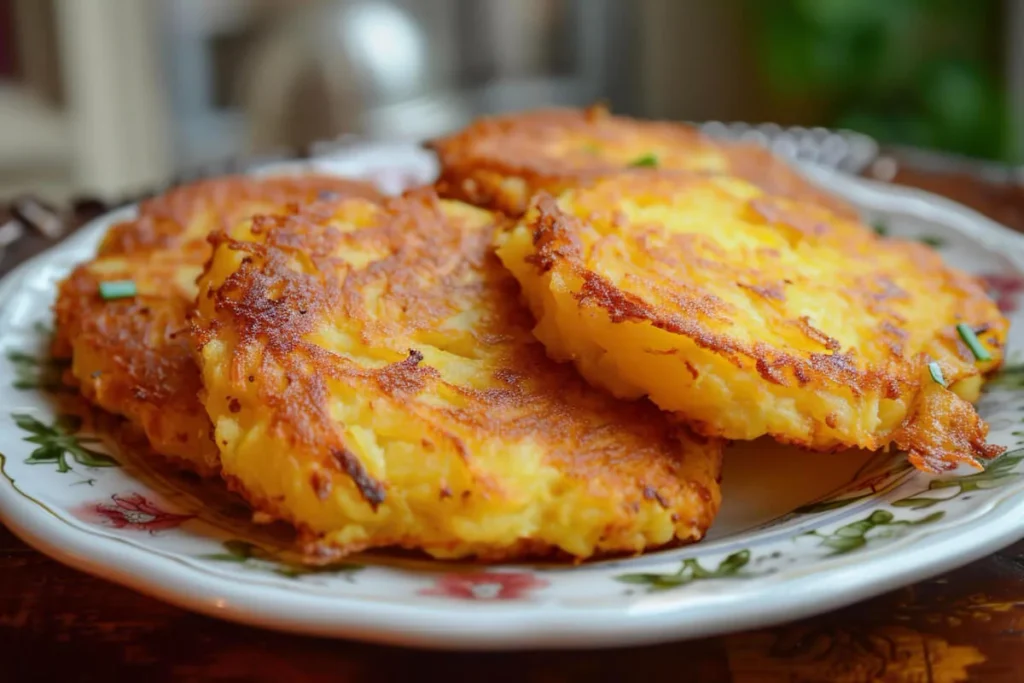

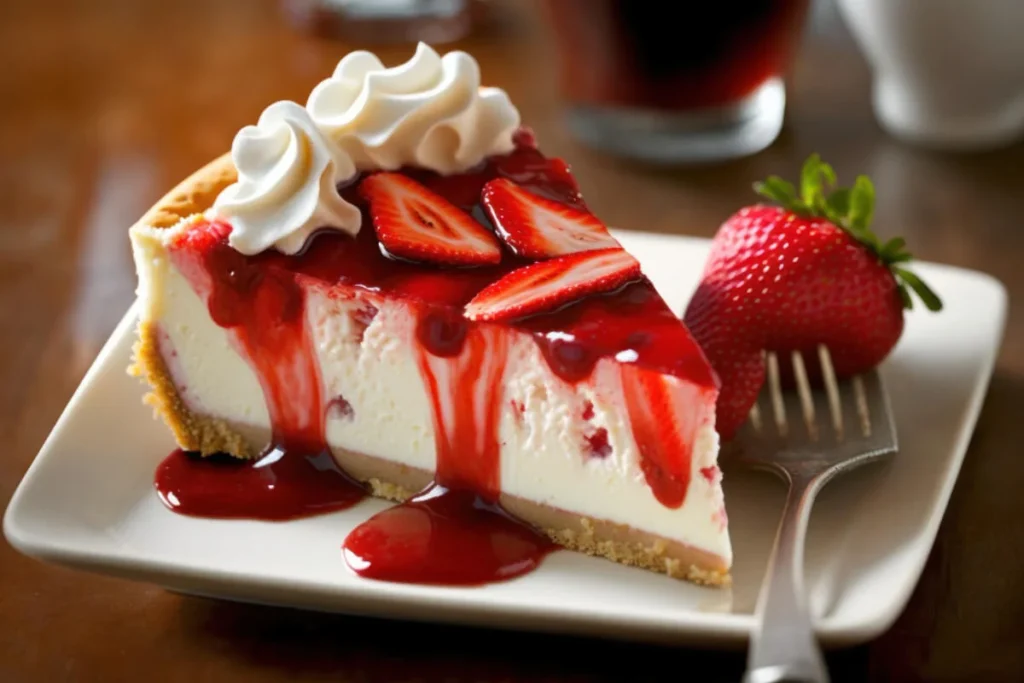
2 thoughts on “Philadelphia Cheesecake Bars”